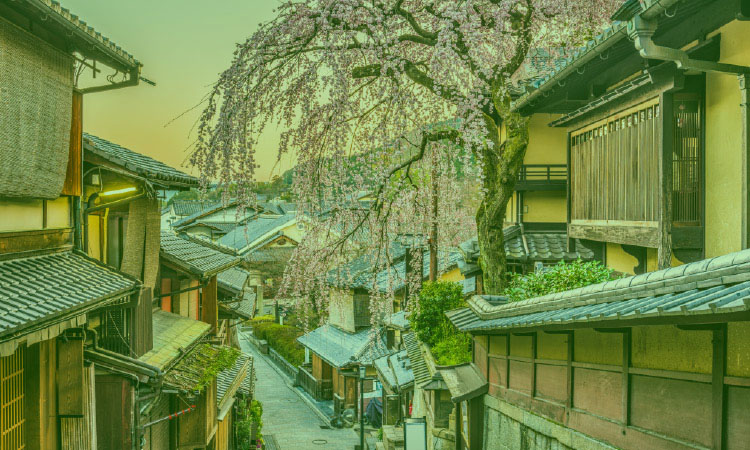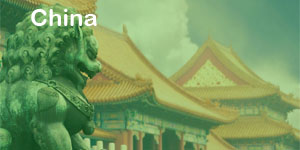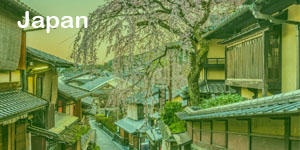Japan: Generics Leading Expansion

In Japan, off-patented drugs are not always converted to generic drugs but may remain on the drug list as off-patented-drug products. These are customarily classified into three groups: patented drugs; off-patented drugs (“long-listed drugs”); and generic drugs. The government of Japan aims to increase the use of generic drugs to 80% by 2020, and has enacted various measures to achieve that target.1 Increased medical expenses due to the aging population have been a major driver of these initiatives. Because of these measures, the use of generic drugs already increased to 65.8% in 2017 from 39.9% in 2011 (see Figure 1) and there is a projected goal of 80% generics by 2020.
Generic drug companies have succeeded in increasing their presence due to the government’s commitment to greater use of generics. However, this growth is limited globally because there are fewer prospective “seeds” for new generics and the domestic market demand is likely to reach a saturation point soon. Developing the overseas market is a way to break through this stalemate.
For example, certain companies in Japan have advanced into the US, the world ’s largest market; in 2017, Sawai Pharmaceutical, one of the biggest generic drug manufacturers, acquired an American generic pharmaceutical company, Upsher-Smith; in July 2016, the second-largest generics manufacturer, Nichi-Iko Pharmaceutical, acquired Sagent Pharmaceuticals, Inc. (which makes biosimilars).
- 1Cabinet Office, Government of Japan. “Basic Policy on Economic and Fiscal Management and Reform 2017,” Cabinet Decision, June 9, 2017, pp. 55-57. https://www5.cao.go.jp/keizai-shimon/kaigi/cabinet/2017/2017_basicpolicies_en.pdf

Expanding Markets
Of all potential foreign markets, the Asian market is the most promising due to cultural and geographic proximity. With the exception of companies with competitive patented drugs such as Takeda, Astellas, Daiichi Sankyo, Eisai, Otsuka, and Mitsubishi Tanabe, Japanese pharmaceutical companies had not shown a keen interest in the Asian market. Generally, those companies have sold patent or off-patent brand products but have not attempted to manufacture or be engaged in the business of generic drugs at all.
The following are examples of other Japanese pharmaceutical companies that have successfully penetrated overseas markets.
Meiji Seika Pharma Co., Ltd.
Meiji Seika Pharma is a pharmaceutical subsidiary of the long-established Meiji Group. Meiji Group is widely known for its food brands. Its pharma subsidiary has outstanding strength in antibiotics and generic drugs. More than 40 years ago, Meiji Group established PT Meiji Indonesian Pharmaceutical Industries and began to produce sterile lyophilized products of aseptically filled drugs as well as solid dosage drugs. The company now distributes these products in Indonesia, Malaysia, Singapore, and Thailand and has started to export penicillin products to Japan.
Meiji also established Thai Meiji Pharmaceutical Co., Ltd. In 1979. Since then, Thai Meiji has manufactured and sold solid dosage products (mainly antibiotics), including over-the-counter (OTC) and veterinary medicines. It has also been engaged in drug exports as a contract manufacturing organization (CMO) with their Japanese headquarters and other Japanese companies.
In February 2015, Meiji acquired an Indian CMO/CDMO giant, Medreich, to start CMO services. In October 2017, using the production and development capability of Medreich, it established Me Pharma as a subsidiary of Meiji Seika Pharma to supply generic drugs to Japan. With the tremendous production capacity of Medreich, Meiji is expanding sales in Japan and other parts of Asia, including B2B business, focusing especially on products expected to be fast growing in the future, such as those for lifestyle-related disease and the digestive system.

Taisho Pharmaceutical Co., Ltd.
Taisho is a top Japanese company for OTC medicines including popular energy drinks. Its prescription drugs, including antibiotics and osteoporosis medications, account for one-third of its sales. It is noteworthy that Taisho’s OTC products are also manufactured in its own factories in Indonesia, Malaysia, and Mexico. In 2016, despite the then-sluggish growth of the Japanese pharmaceutical market, Taisho moved to invest substantial capital to form a business alliance with one of the largest Vietnamese pharmaceutical companies, Duoc Hau Giang Pharmaceutical JSC (DHG). Taisho owns 34% of DHG shares. Taisho has been transferring manufacturing technologies and GMP know-how to DHG, aiming to expand markets for both DHG products and its own products in Vietnam and elsewhere in Asia. It seems likely that, in addition to exporting its own products from DHG back to Japan, Taisho may also undertake CMO business for other Japanese companies.
Fuji Pharmaceutical Co., Ltd.
Fuji Pharma possesses a strong brand and technical know-how in obstetrics and gynecology drugs and radiology. Fuji Pharma is currently deploying in strategic areas a unique synergistic development model of “Brand × Generic × CMO,” where Fuji proceeds simultaneously with production of branded drugs, generic drugs, and CMO. Major shareholders of Fuji Pharma are the founder’s family and Mitsui Trading Co. With the contribution by Mitsui Tracing Co., Fuji Pharma acquired OLIC, Thailand’s largest CMO, in 2012. Then Fuji Pharma built an injection drug production facility to export products back to Japan as well as distribute them in Thailand. Expansion of producing and selling products, and partnering with other companies, in other Asian regions is anticipated.
Nipro Pharma Co. Ltd.
Nipro Pharma has been engaged in CMO business, as well as manufacturing and sales of their own generic drugs. Nipro built the first factory in Hai Phong, Vietnam’s third largest city, and in 2015 started operation of the first ampule drug production building that conforms to J-GMP, EU-GMP, CGMP, and PIC/S GMP. The vial (liquid/lyophilized) drug production facility began operation in 2016. In the future, corresponding to the needs of CMO customer companies, it plans to expand production lines to include oral drugs and external drugs. In 2016, Nipro Pharma formed a capital alliance (acquiring 20.4% of voting rights) with Mekophar (Mekophar Chemical Pharmaceutical Joint-Stock Company). Nipro has made strenuous efforts to provide technical transfer to enhance Mekophar’s quality assurance system and upgrade its production scale. This further strengthened the partnership and enhanced the cooperative relationship, and now Nipro is providing drugs at a competitive price level to Asian markets.
Nippon Chemiphar Corporation
Nippon Chemiphar Corporation is a pharmaceutical company that mainly produces generic solid dosage drugs. In order to manufacture its own products in Vietnam, Nippon Chemiphar established a fully owned subsidiary, with the first plant expected to start production by the end of 2018. Nippon Chemiphar will export the products to Japan as well as to the Asian region in the near future. The company predicted the production cost should be 30% lower than in Japan.
Nichi-Iko Pharmaceutical Co., Ltd
Nichi-Iko is a leading generics company in Japan, ranked second to Sawai Pharmaceutical in sales. Nichi-Iko has been showing enthusiasm toward Asian market development. In Thailand, Nichi-Iko launched 17 products and partnered with DKSH in 2010, Biolab in 2013, and Bangkok Lab in 2015. In 2013, Nichi-Iko partnered with Hanoi Pharmaceutical in Vietnam. In 2018, Nichi-Iko formed business alliances with Lloyd Laboratories, a pharmaceutical company in the Philippines, its subsidiary distribution company InnoGen Pharmaceuticals, and Sunward Pharmaceutical in Singapore and Malaysia. These alliances strengthen Nichi-Iko’s support in drug registration applications, distribution, and sales networking for their products in each country.
Summary
Some top companies have taken bold risks and advanced into the Asian region with their respective strategies. Meiji Seika Pharma has a long history in Asia and has accumulated sales and production know-how, so it should be safe to say that it is one step ahead of other companies.
All the other companies discussed in this article are taking similar steps, which are twofold: first, transfer manufacturing technology of their own pharmaceutical products to partner companies through capital investment, M&A, etc.; second, renovate facilities and systems to ensure production meets Japanese quality standards, factory operations conform to PIC/S GMP, and products can be exported back to Japan. With the exception of Nichi-Iko, all other companies discussed are focusing on quickly establishing production bases elsewhere in Asia that can satisfy Japanese quality standards to export products back to Japan. This trend is likely to continue because exporting to Japan can bring about a considerable profit margin.
In the meantime, other companies have started to provide contract manufacturing services in Asia for Japanese and global companies while simultaneously marketing their products together with partner products in the Asian region. To make this business model successful, each company must smoothly engage other Japanese companies in the alliance and implement a win-win strategy to conquer Asian markets.
Conclusion
Strategic actions taken in the market can be classified into four approaches: (1) invest capital to build the company’s own factory; (2) form a joint venture with a local partner; (3) take over existing assets by merger and acquisition; and (4) form an alliance or association without ownership of assets.
With the exception of Nichi-Iko, which has taken a unique strategy to form an alliance/partnership rather than obtaining its own assets outside Japan, the other companies have used one or more of these strategies. In options (1) through (3), the final goal is to become not only a reputable generic company but also a qualified CMO that is prepared to flexibly meet any global standards.
How should late entrants to the Japanese market proceed? This question is critical to all of the domestic companies in Japan because the available market remains at the same level or shrinks unless they develop a new market outside Japan. The Southeast Asian markets will be enjoying economic growth due to increased population and enrichment of medical insurance. According to our estimate, the pharmaceutical market size in Southeast Asia should increase up to 50% of Japan’s within 5 to 10 years, and we project that half of that market will be in generics.
In general, approaches (2) and (4) should be reasonable and most viable as they are cost- and time-effective solutions. However, the most suitable solution will depend on the types of drugs to be produced, the economic situation in the foreign market, the technical capability of the partner, and, more importantly, the mindset of trust to be cultivated with the partner.
With the Japanese government’s continued desire to reduce drug prices, signs of other changes in the health market such as the enactment in Indonesia of the national health insurance market, and the growth of overall medical expenditures rising fast along with growth of gross domestic product, more changes are coming.






